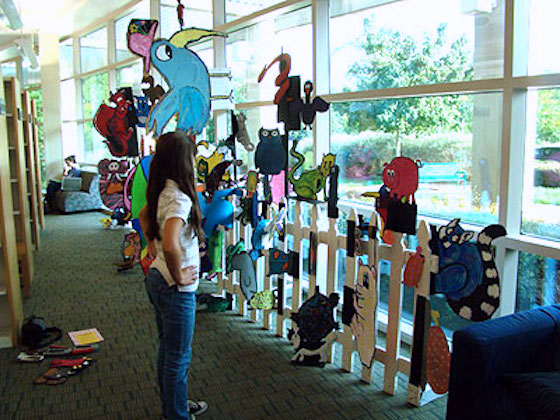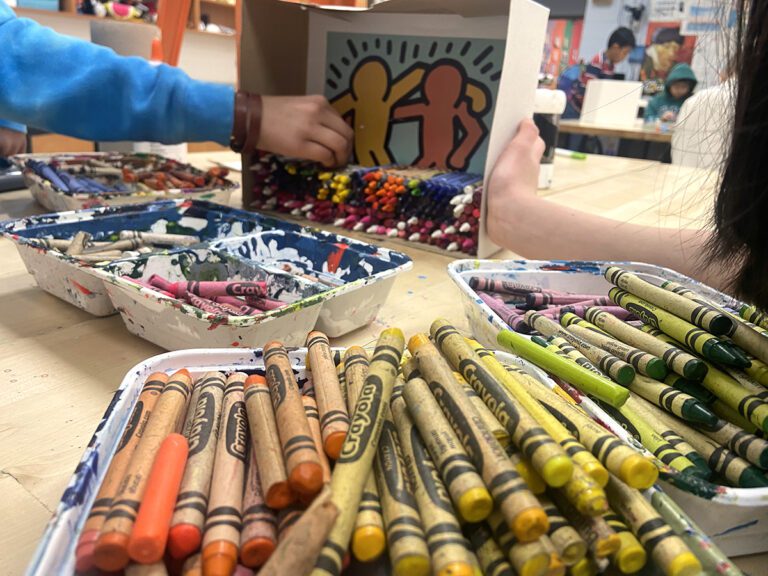As art teachers, the first thing we need to realize about Street Art is that it is illegal. If the art being made is legal, if an artist has permission to place the art at an allotted location, then the art is public art, not street art. Nothing can get a class of high schoolers more fired up than a good lesson about breaking the law. I discovered this when teaching my art history class about the different genres of street art.
What comes to mind when most people think of street art is visions of stencils and cans of spray paint. Old schoolers think about graffiti on the sides of trains while new comers probably think of Banksy. Even those who aren’t familiar with the current street art movement, have probably seen an OBEY baseball cap or the Obama Hope poster, both created at the hand of street artist Shepard Fairey. Digging deeper into the world of this rather recent art movement will reveal a notorious sub genre know as hitchhikers.
The term “hitchhikers” describes any type of street art that is attached to a pole or other object. The hitchhiker then becomes part of the pole. Sometimes the hitchhiker is disguised or changes the meaning of the pole. An example might be adding leaves to a stop sign to change its appearance into a flower. Other times hitchhikers are meant to stand out, latching on to their hosts for the ride.
A few semesters back, I was presenting the Street Art movement to my Art History class. I first gave recognition to the early street artists… the cavemen drawing on the walls of Lascaux. I then paid tribute to Keith Haring who sat on the cutting edge between Pop Art and the Street Art movement. I talked about stencils, and wheat paste, and police, and being arrested. At some point in the presentation I arrived at hitchhikers. As students shouted out, “Mr. Sands, can we do that?” I quickly reviewed the section on orange jumpsuits, which of course only exacerbated the issue. It wasn’t long before we were all sucked up into a street art scheme we dubbed, the Pole Gallery.
Posters were made and distributed throughout the art classes.
[box]
Open Call For Artists!
The first exhibition of the Pole Gallery will run June 8th thru June 15th.
The Pole Gallery is a temporary exhibit of hitchiker street art. Exhibit locations are temporary and change with each art show.
Posting times: Artists wishing to enter hitchhiker art should post on Sunday, June 8th. All art should be removed by 4:00 PM June 15th.
Location: Wooden Pole Street: Intersection of Laura Duncan and Old Raleigh Road City/Town: Apex, NC
[/box]
I drove pasted the Pole Gallery the day after it opened on my way to school.
Once in class, I took attendance with considerable trepidation but was happy to discover that no one had been arrested. In fact, the response to The Pole Gallery was overwhelmingly positive. I received an email not long after from the teen coordinator of the town library asking if our students would like to create a Pole Gallery to display there. everyone was excited to participate and we soon had enough hitchhikers to fill 16 feet worth of picket fencing.
Of course, since we were invited, that project was public art…but I didn’t tell the students that.
We’d love to know, have you ever done anything like hitchhiker art?
How would a project like this go over in your town or city?
What questions do you have about the process?
Magazine articles and podcasts are opinions of professional education contributors and do not necessarily represent the position of the Art of Education University (AOEU) or its academic offerings. Contributors use terms in the way they are most often talked about in the scope of their educational experiences.








